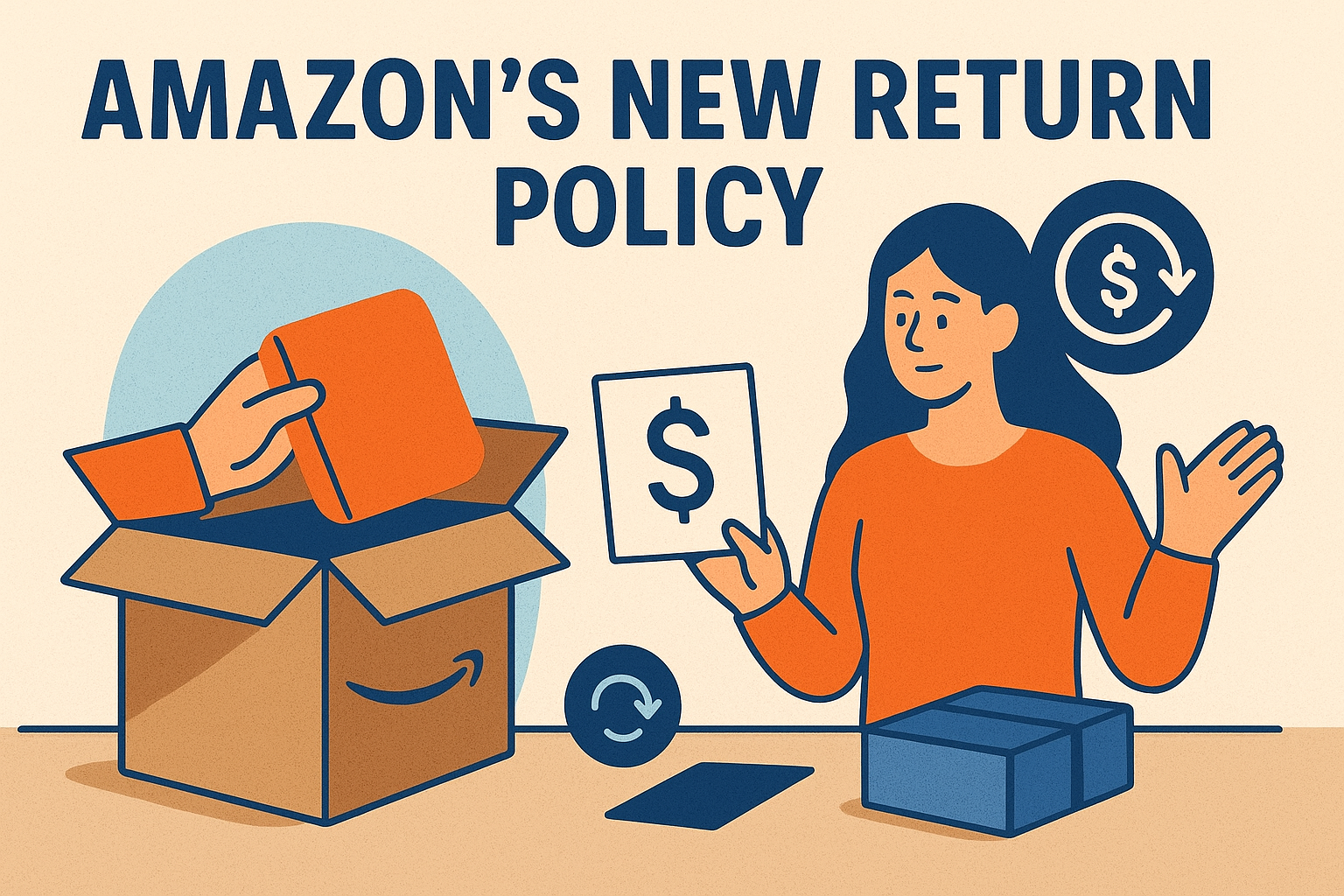Address
304 North Cardinal St.
Dorchester Center, MA 02124
Work Hours
Monday to Friday: 7AM - 7PM
Weekend: 10AM - 5PM

In 2025, Amazon has rolled out several adjustments and refinements to its return policy — changes that have implications for customers, third-party sellers, and Amazon’s own operational margins. This article provides a detailed analysis of the new return policy changes, real-world examples, comparisons, and strategic insights.
Historically, Amazon has allowed most items sold and fulfilled by Amazon to be returned within 30 days of delivery for a refund or replacement, provided the item is unused and in original condition. 亚马逊+2Seller Assistant+2
However, the policy is not uniform: certain categories, sellers, and special occasions have distinct rules.
Below are the most significant changes Amazon has introduced or is planning:
| Change | Description | Stakeholders Affected & Risks / Benefits |
|---|---|---|
| Return Fee for High-Return Products (starting Jan 1, 2025) | Amazon will impose a processing fee on sellers whose products have unusually high return rates. | Sellers of high-return categories (apparel, electronics) may see margin compression. |
| Expanded “Returnless Resolutions” / Refund without Return | For low-cost or hard-to-ship items, Amazon may issue refunds without requiring the customer to ship back the item. | Cuts reverse logistics cost for Amazon/sellers, but can lead to abuse or margin loss for sellers. |
| Shortened Reimbursement Claim Window for FBA Losses | From Jan 2025, sellers must file reimbursement claims for lost or damaged FBA inventory within 2 months rather than 18 months. | More risk for sellers to lose compensation if they don’t monitor inventory closely. |
| Extended Returns During Holiday Season | Amazon continues to give more generous return windows on holiday purchases (often allowing returns until end of January) for items bought between November and December. | Good for customers; sellers must account for returns delayed into the new year. |
| Seller Return Rate Thresholds & Penalty Bands | Amazon now classifies categories with benchmark return percentages (e.g. 2.9% to 12.8%) and penalizes deviation. | Sellers must optimize product quality, listing accuracy, and logistics to stay under thresholds. |
These changes reflect Amazon’s continuing effort to recalibrate the cost of returns, discourage frivolous returns, and shift risk toward sellers where appropriate.
A returnless refund (also called a “refund without return” or “returnless resolution”) means the buyer receives a refund without needing to ship back the item. Amazon or the seller simply allows the buyer to keep the product.
This is often applied to lower-value items or products where the cost of return shipping and processing exceeds the resale value or margin savings.
Benefits:
Risks & Challenges:
Example 1: A small gadget (e.g. USB cable, ~$10).
Example 2 (less favorable): Mid-tier product, e.g. a camera lens.
In practice, Amazon tends to apply returnless resolutions only to low-cost, low-risk items.
Amazon has introduced a system of return rate thresholds per category (for example, 2.9% to 12.8%) beyond which extra return processing fees may be imposed.
If a given product or SKU’s return rate (over a rolling window) exceeds the acceptable threshold, the seller may be charged extra for return costs or face account-level impact.
Furthermore, the return fee does not apply to sellers who ship fewer than 25 items per month.
Consider a hypothetical product:
If the seller sells 1,000 units in a quarter:
Therefore, controlling return rate directly correlates with margin stability.
Not all products are eligible for returns, and Amazon continues to list categories that are generally non-returnable:
Moreover, Amazon sometimes marks items as “non-returnable” in the listing itself. Sellers may not be able to override that flag if using FBA. Amazon Seller Central
One frequent exception is for holiday purchases. Items bought between November 1 and December 31 are often eligible for extended return until January 31 (or later depending on country). However, Apple or electronics may have shorter windows.
Why is Amazon revising its return policy now? Some of the key motivations include:
Returns are increasingly expensive: shipping, inspection, restocking, disposal, and fraud all eat into margins. With growth in e-commerce, the cost burden scales.
Amazon wants to maintain a customer-friendly facade (easy returns) while shifting more of the risk and cost to sellers where feasible. Returnless refunds and return thresholds are one way to balance this.
By penalizing high return rates, Amazon incentivizes sellers to list more accurately (images, descriptions, dimensions), improve QC, and reduce product defects or mis-specifications.
Letting customers keep some items may reduce transportation and handling waste. Some items may already be damaged or worn; shipping them back may worsen them.
If you run (or plan to run) an Amazon seller business under this new regime, consider the following: